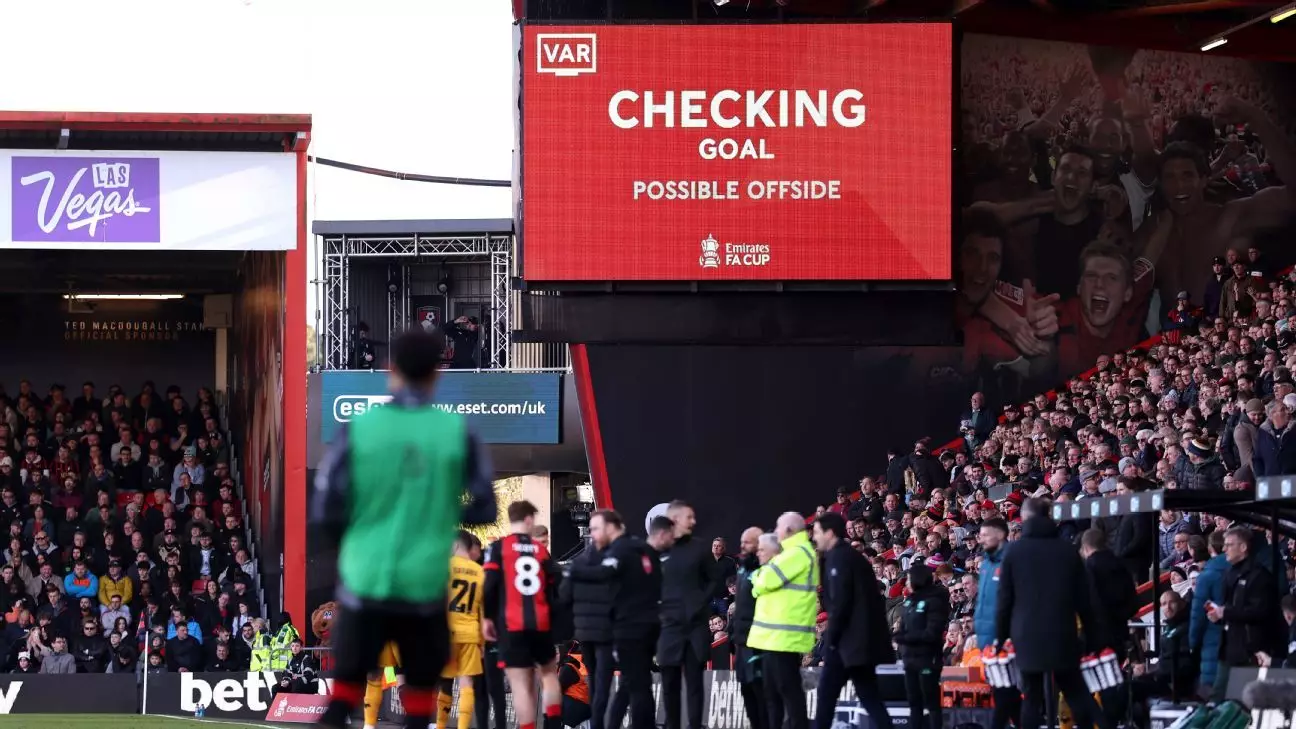In the ever-evolving landscape of football, the introduction of Semi-Automated Offside Technology (SAOT) marks a significant turning point for the Premier League. Set to debut in Matchweek 32 during the weekend of April 12-14, 2024, this advanced technology aims to enhance the accuracy and efficiency of offside decisions on the pitch. The decision to adopt SAOT was not made lightly; it came after extensive discussions and a unanimous vote amongst Premier League clubs exactly one year earlier, on April 11, 2023. This move encapsulates the league’s commitment to continually modernize the game, albeit amid a backdrop of skepticism and technical challenges.
The Pièce de Résistance: Technology in Action
It’s no secret that VAR has been a polarizing topic among fans and pundits alike. The earliest trials of SAOT showcased the potential for quickened decision-making—potentially shaving an average of 31 seconds off the time to resolve offside calls. However, initial tests have not been without their hiccups. The first SAOT application during an actual game—Bournemouth vs. Wolverhampton Wanderers—resulted in a staggering eight-minute VAR review, shattering the notion of efficiency the technology promised. The review was convoluted with two checks for handball and an inability to definitively judge the proximity of players. Such occurrences raise critical questions: Can this technology genuinely enhance the viewer experience, or does it undermine the fluidity of the game?
Critics argue that these teething issues could sow further discord among fans disillusioned by lengthy interruptions. Yet, proponents stress that these are merely growing pains as the Premier League gears up to embrace the future of officiating.
A Timely Adoption or a Late Response?
With leagues like Serie A and LaLiga already rolling out SAOT, questions surrounding the Premier League’s choice to develop its own system emerge. While Tony Scholes, the Premier League’s Chief Football Officer, asserts that they are confident in their decision to forge an independent path—claiming that they’ve adopted “the best system”—the reluctance to employ existing models raises eyebrows. The appeal of FIFA and UEFA’s models, which feature a chip inside the ball for enhanced accuracy, has not gone unnoticed. Consequently, the Premier League’s decision could be seen not only as a technical choice but also as a strategic maneuver in terms of brand identity and competitive differentiation.
Moreover, self-reliance may also stem from a desire to establish a technology that is “futureproof” and devoid of complications from external providers. However, rooting oneself in isolation when other leagues are swiftly advancing can come off as reactionary rather than innovative.
From Challenges to Commitment
Despite the hurdles faced in the implementation of SAOT, the Premier League’s resolve to see it through holds merit. Scholes candidly admitted his initial doubts regarding the technology, but his optimism shines through as he reports significant progress. Such transparency in leadership is commendable and necessary; navigating the tightrope between innovation and tradition is no simple task.
As the league pushes to implement its system before the end of the season, fans and stakeholders are keenly watching. They are eager to see whether the benefits of SAOT will outweigh its initial drawbacks, and whether the league’s faith in this technology can transform the officiating landscape. The focus will not solely be on the accuracy of decisions but also on how this initiative impacts the viewing experience, the pace of play, and ultimately, the beautiful game.
The Future Awaits
As the football community braces for the arrival of Semi-Automated Offside Technology, a dual narrative unfolds. On one hand, there is palpable excitement for the potential efficiency it could bring; on the other, skepticism looms over its readiness and effectiveness. The stakes are high, and the spotlight is firmly fixed on the Premier League to prove that this leap into the future is not only warranted but transformative. Football’s evolution is perpetual, and as it embraces technology, the heart of the sport must remain intact—the essence that draws fans into stadiums and living rooms worldwide. In this junction of tradition and innovation, one fact stands clear: the eyes of the football world will be watching closely.

